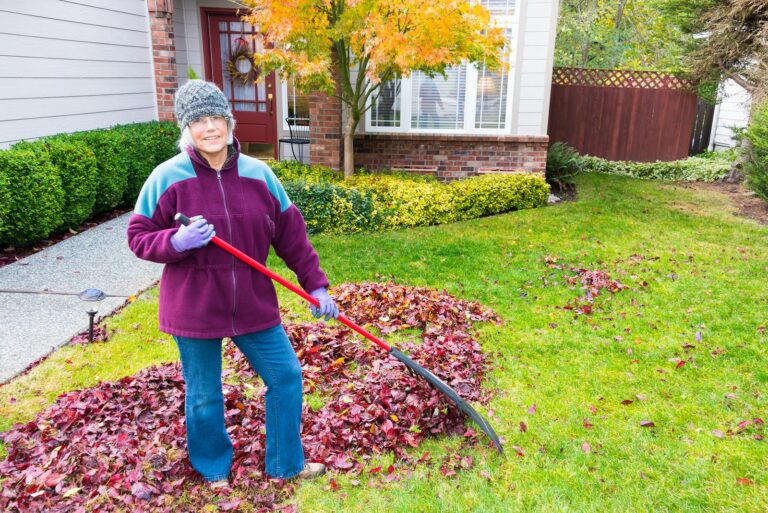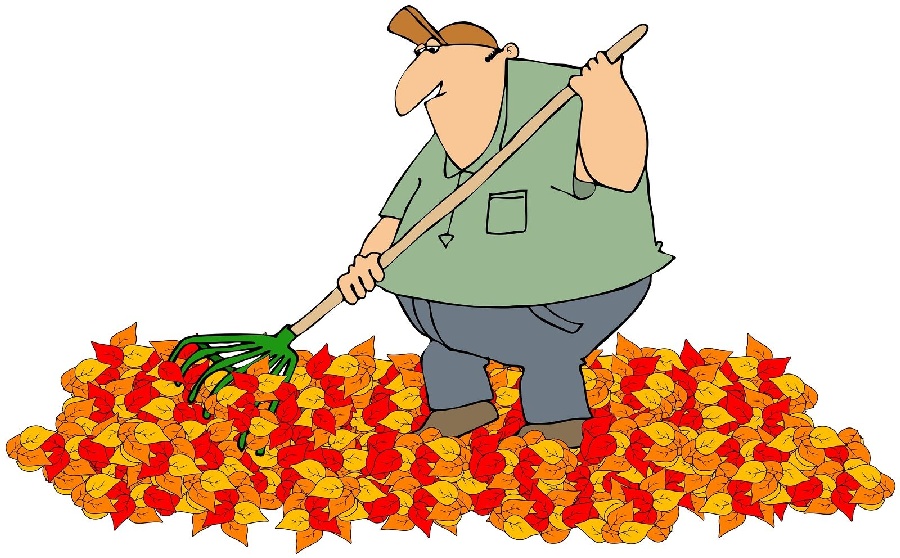
If You Have to Rake Leaves… Rake Safely!
Autumn is a beautiful time of year. In many locations, the season means watching greenery turn to vibrant reds and golds. If only colorful leafs would stay put instead of falling to the ground. For most people living in homes with tree-filled yards, raking may be a necessity and a chore that can quickly become tiring… monotonous… and even painful. If not done with care and caution, raking can easily cause injuries.
The number of raking-related injuries that arrive in hospital emergency rooms is higher than you might imagine. Raking is an activity that demands a lot from the body. In fact, raking uses almost every muscle group. It requires plenty of energy and exertion. Think about it… When you rake, you are constantly reaching, twisting, bending, lifting, etc. And, the older we get, the greater the toll raking takes on our bodies.
It’s impossible to escape having at least a few uncomfortable aches and pains after raking, but there are precautions we can take to avoid straining or injuring our bodies.
A few leaf raking tips...
- Get the right rake. Rakes are not carbon copies of each other. They come in different styles and sizes. There are ergonomic models designed specifically to help reduce back and arm strain. It’s helpful to find a lightweight rake in a size that feels right to you and is comfortable to use. Look for one with padded cushion grips on the handle to reduce strain on your wrists and hands.
- Start out with a plan. Don’t begin raking every direction with no rhyme or reason. You’ll accomplish much more if you’re organized in your approach. Some people like to start at a corner of the space to be cleared and moving directly across towards the opposite corner, raking leaves into a diagonal line in the middle of the space. Then they rake inward from each end of the row to form a pile in the center.
- Remove any dangers. Before raking, put away items like lawn furniture and decorations that may become obstacles. Also clear away any debris like branches or stones in the area that may impede raking and/or become a potential danger.
- Warm up before using your rake. Give yourself a few minutes to stretch out your muscles before you begin raking. A little light exercise should loosen you up and prepare your body for the task.
- Wear shoes appropriate for raking. Sturdy, comfortable shoes with skid-resistant soles are best for the job, because they can help keep you from slipping and/or falling.
- Protect your hands with gloves. There are some great gardening gloves on the market that provide plenty of protection for hands, fingers, and wrists. They help prevent blisters from long hours of raking as well as injuries from twigs and other items that may end up in your leaf pile.
- Don’t rake like a robot. Repeating the same movements again and again is bound to cause discomfort and strain. Try moving different ways as you rake so you won’t keep using the same muscle groups. Every now and then, switch the side of your body you are using as you rake.
- Think about foot placement to avoid twisting. A lot of us stand with our feet firmly planted in one spot and swivel our bodies in different directions as we rake. Many people find that putting one foot a bit ahead of the other makes it is easier to shift body weight comfortably and safely while raking.
- Be careful bending and lifting. Never try to lift anything you are not absolutely sure you can pick up safely and comfortably. When picking up leaves or other items, always bend at the knees rather than from the waist and keep your back as straight as possible.
- Get your doctor’s okay. It’s always a good idea to ask for your doctor’s recommendations when about to tackle any physical activity that isn’t part of your normal daily routine. Raking definitely falls into the category since it’s an infrequent activity requiring physical stamina. Your doctor may have some helpful raking tips to share with you.


Age Adds Flavor
We are not old, we are seasoned!
Don’t forget to visit us on FACEBOOK!
